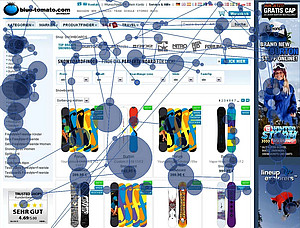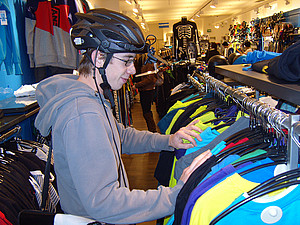Eye tracking

Eye tracking was used as early as the 19th century. Eye movements and gaze were observed by researchers directly. Since 1905, cameras have been used for recording and subsequent analysis. Modern eye tracking developed in the 1970s.
Eye trackers are devices and systems that record and analyze eye movement to find out what a person is looking at for how long, and in what sequence individual elements are perceived. We can distinguish between fixations and saccades from one to the next.

Mobile eye tracking
For mobile eye tracking the participant wears a camera device on their head (see photo). This allows the participant to move about. One camera records their field of vision, while another records their eye movements.
In marketing research, mobile eye tracking is particularly relevant in retailing (see photo). For example, a shopper’s perspective through the aisles of a supermarket can be recorded. In recent decades, eye tracking has become increasingly significant in shelf planning.

Stationary eye tracking
For stationary eye tracking components have been fitted in, or to a monitor to record what is being looked at. The device is not attached to the participant.
The participant looks at a picture, text or a video on the screen while the eye tracker records eye movement. In comparison to mobile measurements, data are more accuracte and comparable among participants.
Nowadays, eye tracking is used in diverse disciplines, e.g. marketing, neuro-sciences, psychology, and usability research. Applications of stationary eye tracking range from testing websites (see photo), viewing commercials and billboards, ananlyzing documents and flyers, to recording the order process in online shops or new product development. Eye tracking can be followed up by interviewing to measure how participants remember specific elements.
Mobile and stationary eye tracking are among the most current and interesting research methods in psychological consumer behavior studies; we use them regularly in our research and our teaching.
